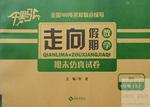题目内容
Three Long Island families forced to move by Hurricane Sandy have been ____ in fancy Manhattan apartments ever since free of charge.
A. put away B. put out
C. put up D. put off
C
【解析】
试题分析:考查短语辨析。A. put away储存;B. put out扑灭;C. put up提供食宿;D. put off推迟。句意:自从飓风桑迪之后,三个长岛家庭被迫搬到豪华的曼哈顿公寓免费居住。你能原谅我吗?故C正确。
考点:考查短语辨析

练习册系列答案
 千里马走向假期期末仿真试卷寒假系列答案
千里马走向假期期末仿真试卷寒假系列答案
相关题目
 w years ago, and I was eager to see his new place and meet his friends.
w years ago, and I was eager to see his new place and meet his friends. I used to struggle to think up things to say, feeling on guard.
I used to struggle to think up things to say, feeling on guard. ext day my dad pulled out his childhood pictures
ext day my dad pulled out his childhood pictures  and told me quite a few stories about his own childhood. Although our times together became easier over the years, I never felt closer to him at that moment. After so many years, I’m at last seeing another side of my father. And in so doing. I’m delighted with my new friend. My dad, in his mew home in Arizona, is
and told me quite a few stories about his own childhood. Although our times together became easier over the years, I never felt closer to him at that moment. After so many years, I’m at last seeing another side of my father. And in so doing. I’m delighted with my new friend. My dad, in his mew home in Arizona, is